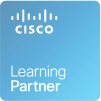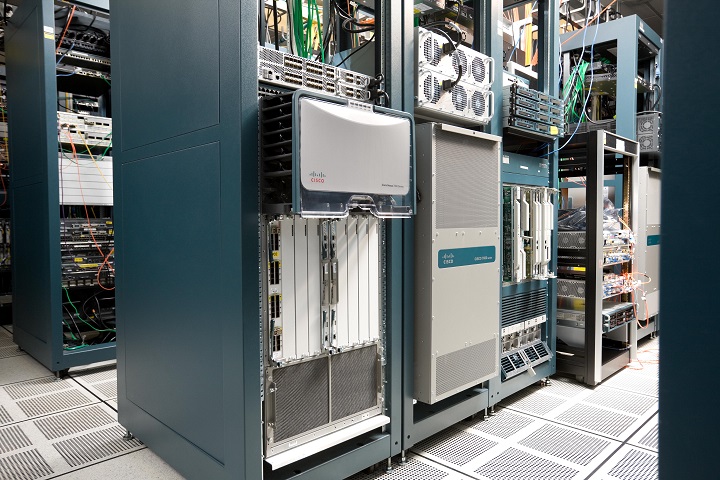Sobre o curso DCICN
O curso Introducing Cisco Data Center Networking (DCICN) apresenta as três áreas tecnológicas primárias que são usadas em um Data Center equipado com as tecnologias Cisco. O curso é apresentado pelo Cisco Learning Partner em uma carga horária de 40 horas (5 dias), sendo o primeiro curso da carreira de Data Center da Cisco.
Carga horária: 40 horas (5 dias)
Currículo, objetivos do curso, ementa e informações gerais (em inglês)
Introducing Cisco Data Center Networking (DCICN) prepares students for the Cisco CCNA® Data Center certification and for associate-level data center roles. The course covers foundational knowledge, skills, and technologies, including data center networking concepts, data center storage networking, and data center physical infrastructure. The training provided in this course is focused on data center basic operations covering the topics needed for today’s demanding associate-level positions.
Course Prerequisites
It is recommended, but not required, to have the following skills and knowledge before attending this course:
- Good understanding of networking protocols
- Good understanding of the VMware environment
- Basic computer literacy
- Basic knowledge of Microsoft Windows operating systems
- Basic Internet usage skills
Course Objectives
Upon completion of this course, you will be able to:
- Describe the characteristics and benefits of the Ethernet protocol. List Ethernet standardization.
- Describe the OSI and TCP/IP models
- Describe IPv4 and IPv6 network layer addressing
- Describe the packet delivery process
- Compare and contrast TCP/IP with the OSI model
- Examine the Cisco Data Center network architectures, the 2- and the 3-tier network design, and the spine/leaf network design.
- Describe Cisco Nexus products and explain basic functionalities and tools of Cisco NX-OS.
- Describe VLANs
- Describe issues with STP
- Describe the routing process on Nexus switches
- Describe Layer 3 first hop redundancy
- Describe and configure user security features
- Describe ACL object groups
- Describe storage connectivity options in the Data Center. Compare iSCSI, Fibre Channel, and NAS connectivity for remote server storage.
- Describe Fibre Channel storage networking
- Describe VSANs
- Describe communication between the initiator and target
- Describe Fibre Channel zone types and their uses
- Describe NPV and NPIV
- Describe data center Ethernet enhancements that provide a lossless fabric
- Describe Fibre Channel over Ethernet
- Describe the components of a Cisco UCS server
- Describe the Cisco UCS physical connectivity for a Fabric Interconnect cluster
- Describe the Cisco UCS Manager interfaces
Job Roles
- Data Center Engineer
- Network Administrator
- Network Engineer
- System Administrator
- Systems Engineer
- Network Designer
- Consulting Systems Engineer
- Technical Solutions Architect
Faça seu treinamento com os melhores
Pagamentos no PagSeguro com segurança e flexibilidade em até 12 vezes
Ementa do Curso
- Module 1: Network Protocols and Host-to-Host Communication
- Lesson 1: Describing Ethernet
- Lesson 2: Describing OSI and TCP/IP Models
- Lesson 3: Describing IPv4 and IPv6 Network Layer Addressing
- Lesson 4: Describing Packet Delivery on a Hierarchical Network
- Lesson 5: Describing the TCP/IP Transport Layer
- Module 2: Basic Data Center Networking Concepts
- Lesson 1: Describing Data Center Network Architectures
- Lesson 2: Describing the Cisco Nexus Family and NX-OS
- Lesson 3: Implementing VLANs and Trunks
- Lesson 4: Describing Redundant Switched Topologies
- Module 3: Advanced Data Center Networking Concepts
- Lesson 1: Describing the Routing Process on Nexus Switches
- Lesson 2: Describing Layer 3 First Hop Redundancy
- Lesson 3: Describing AAA on Nexus Switches
- Lesson 4: Describing ACLs on Nexus Switches
- Module 4: Basic Data Center Storage
- Lesson 1: Describing Storage Connectivity Options in the Data Center
- Lesson 2: Describing Fibre Channel Storage Networking
- Lesson 3: Describing VSANs
- Module 5: Advanced Data Center Storage
- Lesson 1: Describing Communication Between Initiator and Target
- Lesson 2: Describing Fibre Channel Zone Types and Their Uses
- Lesson 3: Describing Cisco NPV Mode and NPIV
- Lesson 4: Describing Data Center Ethernet Enhancements
- Lesson 5: Describing Fibre Channel over Ethernet
- Module 6: Cisco UCS Architecture
- Lesson 1: Describing Cisco UCS Server Hardware Components
- Lesson 2: Cisco UCS Physical Connectivity for a Fabric Interconnect Cluster
- Lesson 3: Describing the Cisco UCS Manager Interfaces
Laboratórios
Guided Lab 1: Explore IPv4 and IPv6 Addressing
Guided Lab 2: Explore LAN Communication
Guided Lab 3: Explore Protocol Analysis
Guided Lab 4: Explore TCP and UDP Communication
Guided Lab 5: Explore the Cisco NX-OS Command Line Interface
Guided Lab 6: Explore Topology Discovery and Documentation
Guided Lab 7: Implement VLANs and Trunks
Guided Lab 8: Map a Spanning Tree and Configure Port Channels
Guided Lab 9: Implement Multilayer Switching
Guided Lab 10: Configure OSPF
Guided Lab 11: Configure EIGRP
Guided Lab 12: Configure HSRP
Guided Lab 13: Configure AAA and Secure Remote Administration
Guided Lab 14: Configure ACLs
Guided Lab 15: Configure VSANs
Guided Lab 16: Validate FLOGI and FCNS
Guided Lab 17: Configure Zoning
Guided Lab 18: Explore the Cisco UCS Manager GUI
Conheça mais sobre a nossa visão sobre as certificações da Cisco aqui!
Valor do Investimento
- Reais (BRL): R$ 7.980,00
- Cisco Learning Credits (CLC): 20
OBS: preços válidos para treinamentos presenciais na cidade do Rio de Janeiro ou para treinamentos VILT (Online/WebEx).


Próximos Treinamentos Introducing Cisco Data Center Networking (DCICN)
abril 2025
Sem Treinamentos / Eventos
maio 2025
Sem Treinamentos / Eventos

